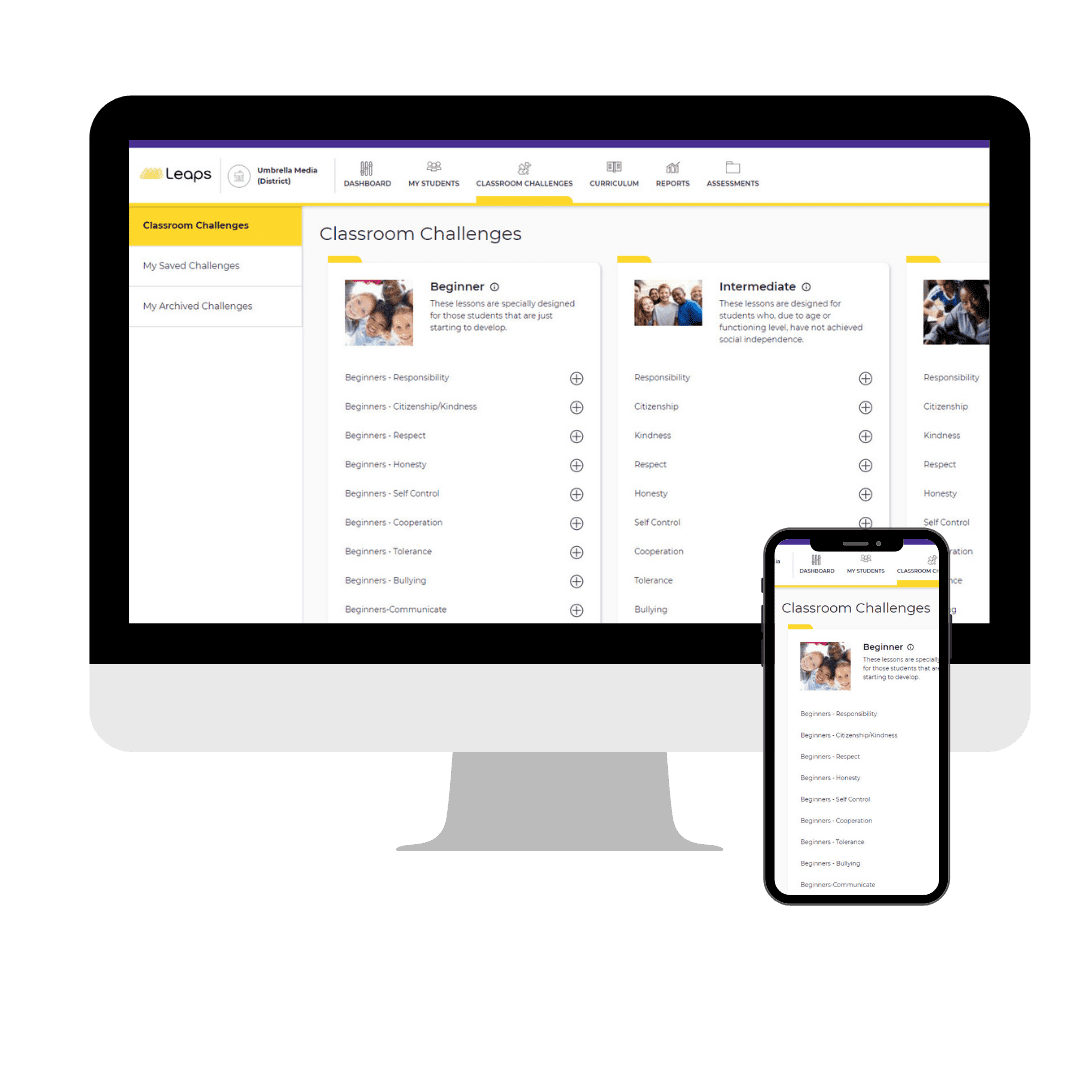CARES Act Funding for Schools
CARES Act Funding for Elementary and Secondary School Emergency Relief
Help your school apply for grant programs for SEL, classroom management and behavioral support. The following information can help teachers and other education officials to fund programming that will help with student needs, created by COVID19 pandemic school closures. Â
The CARES Act includes:
Planning for and coordinating during long-term closures, including for how to provide meals to eligible students, how to provide technology for online learning to all students, how to provide guidance for carrying out requirements under IDA and how to ensure other educational services can continue to be provided consistent with all Federal, State and local requirements.
How Leaps Is Aligned:
Leaps provides significant data, tracking and reporting to help educators monitor and manage the specific needs of their students and faculty. Our comprehensive benchmarking and assessment tools give administrators a big-picture look at how things are going, across the district, in a school or in a specific classroom.
Simple reporting tools provide important data and reporting on how each student is doing with regard to distance learning, their sense of well-being and mental health and more. Leaps provides the tools needed to both coordinate and document student services, supports and interventions.
The CARES Act includes:
Activities to address the unique needs of low-income children or students, children with disabilities, English learners, racial and ethnic minorities, students experiencing homelessness, and foster care youth, including how outreach and service delivery will meet the needs of each population.
How Leaps Is Aligned:
Leaps allows educators to monitor and intervene on behalf of any student’s academics, behavior, attendance, SEL, and basic needs; including the unique needs of the students with disabilities, low-income families, minorities, those in foster care and more.
Leaps assessments and reporting tools provide critical insights for teachers and school administrators to recognize any lapse in serving these students. Leaps provides data in the aggregate so that an educator can look at measurable results, find success and fill gaps where they occur.
It is even possible to track student success along with data-points related to their participation in free lunch programs, language studies and other key data points required to address the needs of the whole student body, student by student.
The CARES Act includes:
Providing mental health services and supports.
How Leaps Is Aligned:
The Leaps program addresses mental health across the full spectrum of concerns from common sense social emotional learning to classroom management strategies and into behavior supports and documentation. Leaps includes helpful collaboration and documentation tools for school counselors and other mental health professionals to log student support notes, assign and manage interventions, and collaborate with support staff and administrators.Â
The CARES Act includes:
Purchasing educational technology (including hardware, software, and connectivity) for students who are served by the local educational agency that aids in regular and substantive educational interaction between students and their classroom instructors, including low-income students and students with disabilities, which may include assistive technology or adaptive equipment.
How Leaps Is Aligned:
Leaps gives teachers day-to-day access to assess and manage behavior, attendance, social and emotional learning and benchmarking in a single system. We make it easy for teachers and counselors to assign and manage interventions across multiple tiers of support, so they can collaborate with support staff and school administrators.
Leaps makes it possible to manage everything in a single classroom, for the whole school and district-wide with easy to read reports that can be accessed easily for documentation. Our data-driven software solution puts these critical tools in the hands of every teacher as well as district leadership. Fidelity reporting, updates and measurable improvements in attendance, academics, behavior and school culture can be seen across the district.
The CARES Act includes:
Providing principals and others school leaders with the resources necessary to address the needs of their individual schools.
How Leaps Is Aligned:
Leaps helps principals and other school leaders manage multiple resources and programs in one place, in order to address the needs of their students. This includes data-driven tracking and reporting tools that provide deep insights into the strengths and deficits of each student as well in the aggregate, for a classroom, a school or for the whole district.
Leaps also provides training for all staff and makes it easy for staff to manage tracking and reports as needed.

